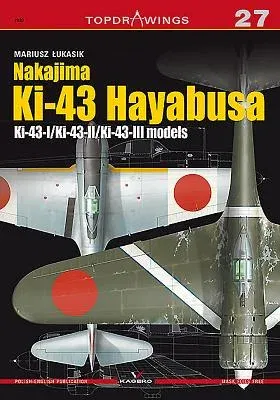Mariusz Lukasik
(Author)Nakajima Ki-43 Hayabusa: Ki-43/Ki-43-II/Ki-43-IIIPaperback, 30 November 2015

Qty
1
Turbo
Ships in 2 - 3 days
In Stock
Free Delivery
Cash on Delivery
15 Days
Free Returns
Secure Checkout

Part of Series
Topdrawings
Part of Series
Top Drawings
Print Length
28 pages
Language
English
Publisher
Kagero
Date Published
30 Nov 2015
ISBN-10
8364596713
ISBN-13
9788364596711
Description
Product Details
Author:
Book Format:
Paperback
Country of Origin:
PL
Date Published:
30 November 2015
Genre:
1940's
ISBN-10:
8364596713
ISBN-13:
9788364596711
Language:
English
Pages:
28
Publisher:
Series: